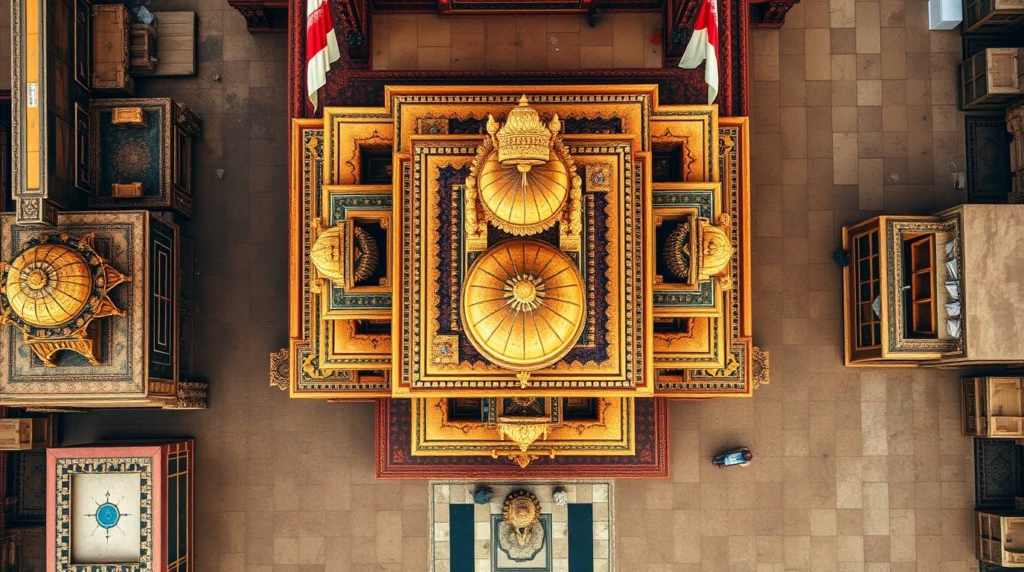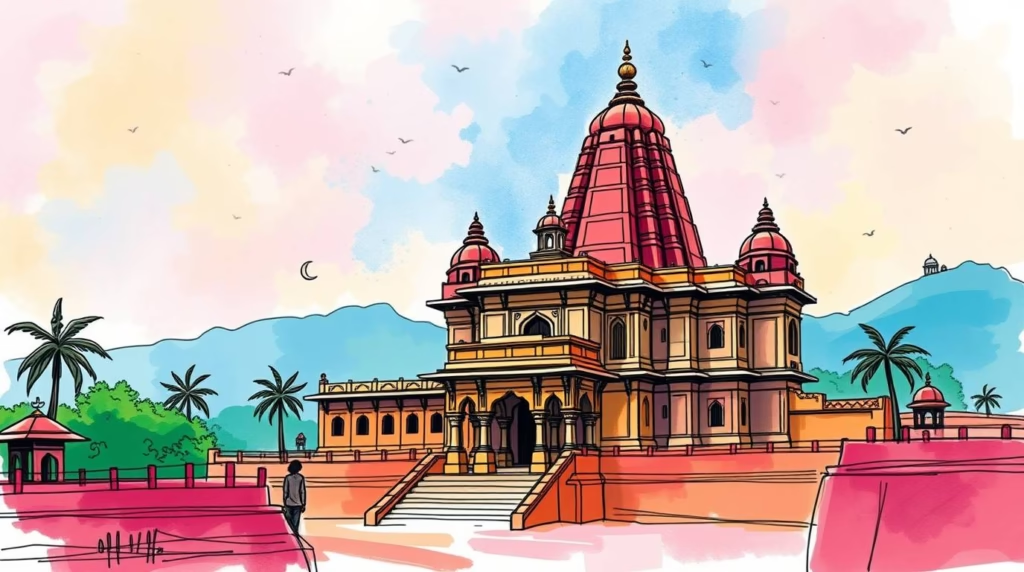
10 Enigmatic Monuments in India That Defy Explanation
India’s landscape is dotted with architectural marvels that blend history, science, and mystery. From rust-resistant pillars to temples that vanish underwater, these structures showcase ancient ingenuity that continues to baffle experts. Below, we explore 10 such enigmatic monuments, each with secrets that spark curiosity and wonder. Discover the mysteries behind these feats of engineering and the theories that attempt to explain them.
1. Delhi’s Iron Pillar: The Rust-Defying Marvel
Nestled within Delhi’s Qutub Minar complex, the Iron Pillar, erected in the 4th century CE, stands as a testament to ancient metallurgical mastery. Towering over 7 meters, this pillar has defied rust for over 1,600 years despite constant exposure to rain and sun.
Mystery: How did ancient Indians forge iron with such advanced corrosion resistance? The pillar’s unique composition—high phosphorus and low sulfur—hints at metallurgical knowledge far ahead of its era.
Theories: While some scholars suggest lost forging techniques, others attribute scientific breakthroughs to the Gupta Empire. Local folklore even attributes mystical powers to the pillar, believed to grant wishes to those who embrace it.
2. Lepakshi’s Hanging Pillar: A Gravity-Defying Feat
Among the 70 columns of the Veerabhadra Temple in Lepakshi, Andhra Pradesh, the “Hanging Pillar” is a wonder. This massive stone pillar appears suspended, with a slight gap at its base, allowing visitors to slide cloth or paper underneath.
Mystery: How was this pillar engineered to hover above the ground? The precision required to balance such a heavy structure challenges modern engineering logic.
Theories: Some argue it was an intentional display of architectural skill by ancient builders. Others suggest structural shifts over centuries created the gap. British engineers once tried to unravel the mystery but left without answers.
3. Jantar Mantar: Precision Astronomy in Stone
The Jantar Mantar observatories at Jaipur, Delhi, and other towns were constructed in the 18th century by Maharaja Jai Singh II and have enormous stone equipment for astronomy. The Samrat Yantra, a colossal sundial in Jaipur, measures time with an astonishing accuracy of two seconds.
Mysteries: Without access to contemporary technology, how did Jai Singh get such accuracy? The instruments’ accuracy rivals contemporary tools, leaving experts in awe.
Theories: Jai Singh’s deep knowledge of Indian and Persian astronomy, combined with advanced mathematics, likely enabled this feat. The observatories’ scale and durability underscore an unparalleled grasp of geometry.
4. Ellora’s Kailasa Temple: A Monolithic Masterpiece
The epitome of rock-cut architecture is the Kailasa Temple (Cave 16) at Ellora, Maharashtra, which was carved from a single rock in the eighth century. Dedicated to Lord Shiva, this multi-storied temple boasts intricate carvings and a sprawling courtyard.
Mystery: How was this massive structure sculpted using basic tools? Without sophisticated equipment, excavating more than 200,000 tons of rock appears to be practically impossible.
Theories: The Rashtrakuta dynasty is credited with this marvel, but some fringe theories suggest extraterrestrial aid or divine inspiration due to the temple’s grandeur and precision.

5. Barabar Caves: Polished Perfection
The oldest rock-cut caverns in India are the Barabar caverns in Bihar, which date to the Mauryan Empire in the third century BCE. Particularly impressive acoustics and geometric accuracy may be found in the granite chambers of the Lomas Rishi Cave, which have been polished to a mirror-like sheen.
Mystery: How did ancient artisans polish hard granite so flawlessly? The caves’ purpose and construction techniques remain elusive.
Theories: Likely built for Jain and Buddhist monks as meditation spaces, the caves may have used advanced abrasive methods. The acoustic properties suggest a deliberate design for spiritual practices.
6. Hampi’s Musical Pillars: Stone Symphonies
The “Musical Pillars,” which are thin granite columns that produce unique musical notes when tapped, are located in the Vittala Temple in Hampi, Karnataka. Each pillar, carved from a single stone, forms part of the temple’s pavilion.
Mystery: In what ways were these pillars designed to generate particular tones? The acoustic engineering behind varying pitches puzzles researchers.
Theories: The pillars’ differing thickness and density likely create the sounds, a testament to the Vijayanagara Empire’s acoustic expertise. Replicating this technique today remains a challenge.

7. Konark Sun Temple: The Magnetic Enigma
Famous for its elaborate carvings and astrological alignments, the Sun Temple in Konark, Odisha, is built like a chariot and dates back to the 13th century. According to local tradition, a center idol was reportedly levitated by a huge magnet in the sanctuary.
Mystery: Could medieval India have harnessed magnetism strong enough to levitate objects? The temple’s partial ruin leaves no physical evidence.
Theories: Some argue that lodestone magnets and careful engineering may have produced the phenomenon, while others reject the account as myth. The temple’s celestial alignments add to its mystique.
8. Shani Shingnapur’s Floating Stone: A Divine Riddle
There is a lot of folklore about a big stone connected to the Shani temple in the village of Shani Shingnapur in Maharashtra. Villagers claim it was found floating in a river, believed to possess divine powers.
Mysteries: What led to the stone’s purported buoyancy? Though now grounded, its legend endures among devotees.
Theories: Although little scientific research has been done, geologists speculate that it might be a lightweight volcanic rock. The stone continues to serve as the community’s spiritual focal point.
9. Bhimbetka Rock Shelters: Prehistoric Puzzles
Over 30,000-year-old rock paintings can be found at Madhya Pradesh’s Bhimbetka Rock Shelters, a UNESCO World Heritage Site. These artworks depict animals, humans, and enigmatic geometric patterns.
Mysteries: What was the aim of these paintings and who made them? Some symbols resemble modern astronomical or mathematical concepts, sparking debate.
Theories: Archaeologists suggest early humans used them for rituals or communication. The sophisticated themes encourage conjecture about highly knowledgeable ancient civilizations.

10. Stambheshwar Mahadev Temple: The Vanishing Shrine
Dedicated to Lord Shiva, the Stambheshwar Mahadev Temple in Gujarat is a “disappearing temple” that disappears at high tide and resurfaces at low tide. Its rhythmic dance with the sea captivates visitors.
Mystery: Why build a temple that floods daily? Its resilient structure and unusual location defy conventional logic.
Theories: The location might represent the cyclical nature of life or correspond with prehistoric astronomical or marine knowledge. Its enduring construction highlights remarkable engineering.
Conclusion: India’s Monuments
These 10 structures weave a tapestry of India’s architectural brilliance and scientific prowess. From the Iron Pillar’s rust resistance to the Stambheshwar Temple’s tidal rhythm, each monument holds secrets that challenge modern understanding. Whether rooted in lost technologies, cultural symbolism, or extraordinary skill, these mysteries continue to inspire awe. As archaeology and science progress, we may unlock some answers, but for now, these wonders stand as enduring testaments to India’s enigmatic past.
more news visit BB